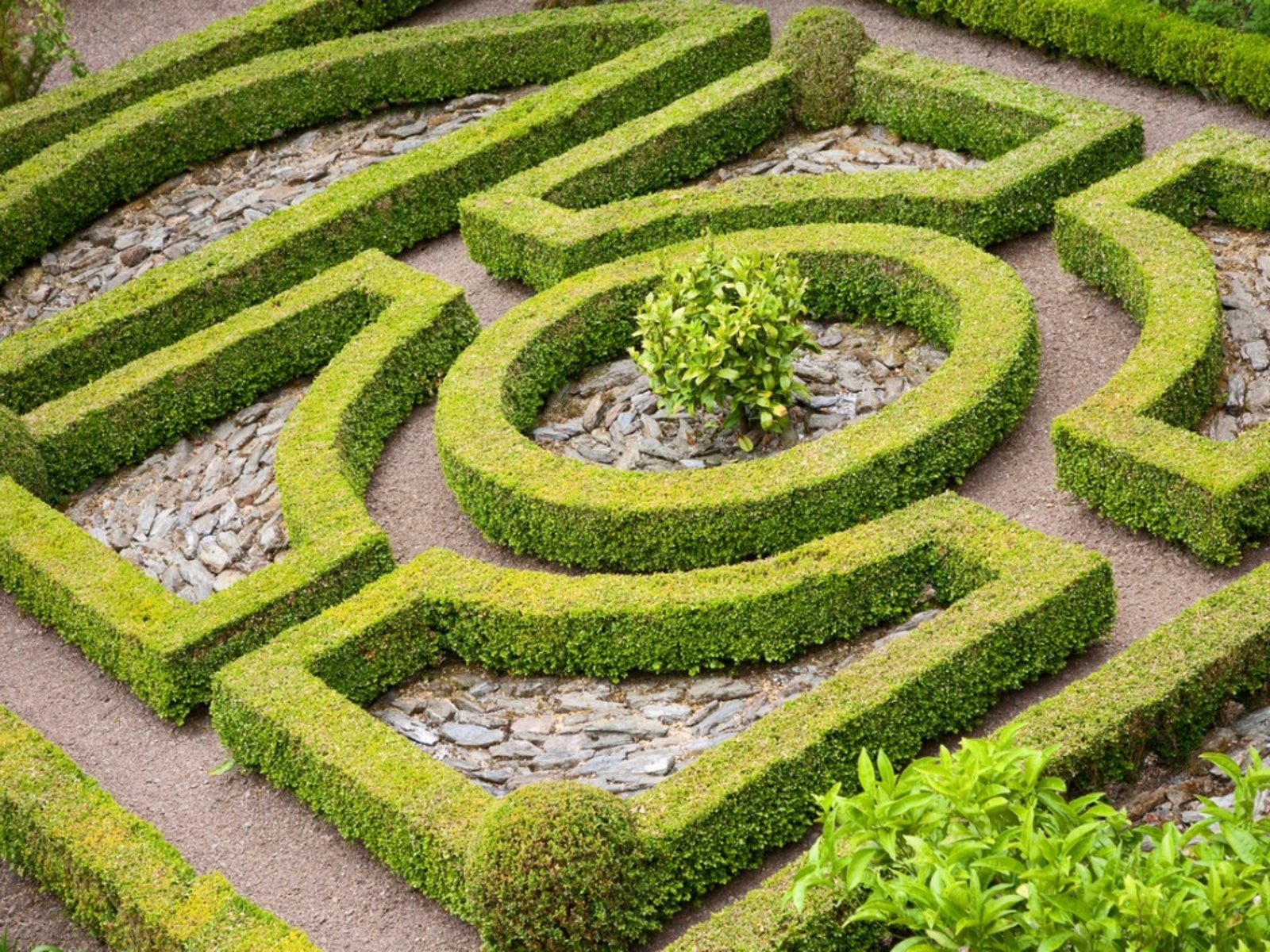Parterre Garden Design: How To Create A Parterre Garden


Victorians had a love for symmetry and order as well as plants. Many of our popular ornamentals today stem from Victorian era collections. In order to showcase their beloved plants, many gardeners of that day chose to display them in Parterre knot gardens. What is a Parterre garden? These are a take on the traditional knot garden but slightly simpler to maintain. Learning how to create a Parterre garden can enhance your personal collection of sun loving or shade hardy specimens.
What is a Parterre Garden?
The Victorian era began in 1837 and ended with the reign of Queen Victoria in 1901. The period emphasized the importance of what was considered "English" and was characterized by rigid models of behavior. This uptight notion led to similar strict artistic standards. Enter the Parterre garden design. Such garden plans contained plants in a very controlled pattern and allowed the growing middle class of the period to conform to popular English standards in ways that were once the province only of the upper class. Parterre gardens relied primarily upon easy to maintain border plants, such as boxwood, with an intricate interior pattern of herbs, flowers and sometimes vegetables. The entire effect should be equally divided in each hemisphere. The best way to view a Parterre garden is from above, where the carefully planned garden can be enjoyed to best effect. Traditional Parterre knot gardens were based on the Celtic knot, intricate and difficult to maintain. There are 5 other types of Parterre: embroidered, compartmented, cut-work, water and Parterres a l'anglaise or grass Parterre. Each is characterized by interior division compartments. Traditionally, the border plants are permanent while interior plants would be annuals or vegetables and very changeable.
How to Create a Parterre Garden
Parterre garden design begins with a flat open space in the landscape. It can be shady or sunny, but if you want to fill inside the patterns with vegetables, it is best to choose a sunny location. Next, sketch out your pattern. The simplest shape for creating Parterre gardens is a cross, but you can get creative with triangles and other geometric shapes fit together. Just remember each area will contain a different set of plants to create the pattern. Prepare the soil by amending it and checking drainage and pH. Once you have the soil nicely broken up and juicy, it is time to line out your pattern. Using stakes and string is an easy way to divide up the area prior to planting to help you stick to the desired design.
Choosing Plants for a Parterre
The outer border of the design should include easy to maintain plants that will not grow so tall that they overshadow the interior specimens. Boxwoods are traditional, but yews or other plants that respond well to shearing are also appropriate. Really, any plant that is evergreen and can be contained to some degree will work well. In the patterned interior, traditionally plants such as heathers or heaths, lavender and other shrubby herbs were used. You may choose to provide a focal point in the center such as a dwarf fruit tree, fountain, birdbath or sundial. The herbaceous beds will radiate out from the center of this. When planting time arrives, start at the center and work your way out. Creating Parterre gardens in this way is easiest and keeps you from stepping on your work as you install the design plants. Water and watch your design fill in and change from season to season, adding color interest and vegetables if they are part of your plan.
Gardening tips, videos, info and more delivered right to your inbox!
Sign up for the Gardening Know How newsletter today and receive a free copy of our e-book "How to Grow Delicious Tomatoes".

Bonnie Grant is a professional landscaper with a Certification in Urban Gardening. She has been gardening and writing for 15 years. A former professional chef, she has a passion for edible landscaping.
-
 Grow ‘Karl Rosenfield’ Peony Plants For The Ultimate Frilly Border Beauties And Cut Flowers
Grow ‘Karl Rosenfield’ Peony Plants For The Ultimate Frilly Border Beauties And Cut FlowersFor frilly double magenta peony petals infused with a heady fragrance, grow ‘Karl Rosenfield’ peony plants. Here’s how to cultivate the ultimate plushy blooms
By Tonya Barnett
-
 10 Common Composting Problems That Can Spoil Your Garden Gold – Plus Easy Fixes
10 Common Composting Problems That Can Spoil Your Garden Gold – Plus Easy FixesLearn how to troubleshoot common composting issues before they ruin your stash – from bad smells and bugs to materials not breaking down as they should.
By Susan Albert